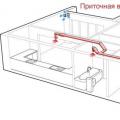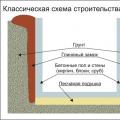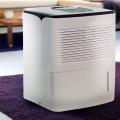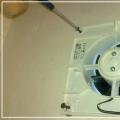Good heating in both a private house and an apartment is characterized by several features. Firstly, all rooms should be warmed up to a comfortable temperature and the latter should not fluctuate depending on the time of day. Secondly, fuel consumption should be kept to a minimum. Thirdly, it is desirable to be able to regulate the heating intensity of the batteries in each room. Fourthly, the repair, if any, should be simple, easy and carried out without turning off the heating of the entire house.
Types of heating
The principle of operation of any heating system is that the coolant, water or antifreeze, is heated in the boiler, moves through pipes from one heater to another, gradually giving off heat, and returns to the boiler for reheating and use. However, there are several ways to implement this concept. The choice of the option that is optimal for a private house depends on a number of factors.
Fundamental to the classification is the device of the expansion tank. Water, like any other liquid, expands when heated and, accordingly, its density decreases. To compensate for the effect, an expansion tank is installed.
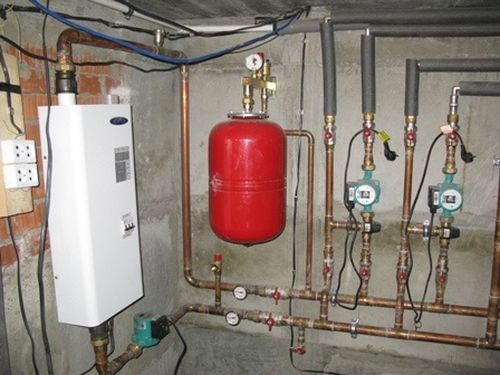
Depending on the design of the tank, the systems are divided into two large groups.
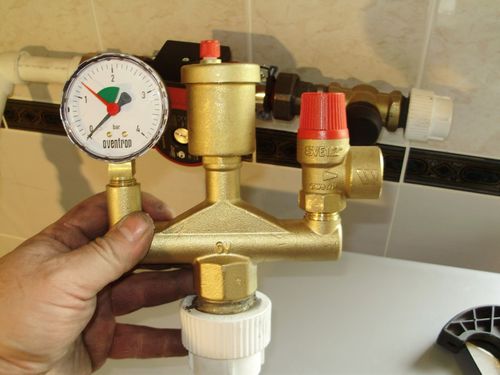
natural circulation
Any heating scheme, first of all, must ensure the supply of heated coolant to batteries or radiators. There are two ways to implement movement.
Natural circulation is a very economical option, as it requires a minimum of equipment. In this case, the circulation of water is provided by the expansion property of water or other liquid after heating. The coolant with a high temperature has less weight and moves along the upper pipe to the radiators, where it gradually cools. Cooled, it goes down and returns to the boiler through the return pipe, simultaneously displacing the heated, lighter coolant. The amount of natural circulation will depend on the temperature difference (usually 10 degrees), and on the resistance to the movement of the coolant. The last problem is solved by increasing the diameter of the pipe.
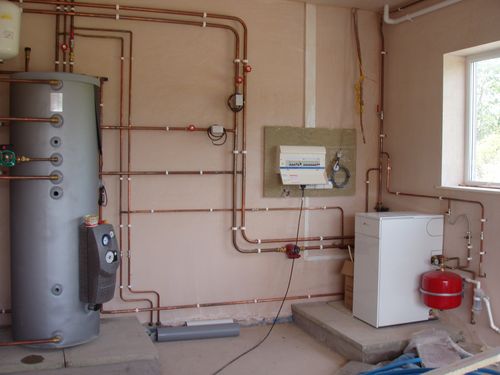
Also, the heating efficiency is ensured by the level of location of the elements: the boiler must be at least 3 m below the level of the radiators.
Advantages
- Efficiency - requires a minimum of equipment.
- A fairly simple installation, do-it-yourself.
- If necessary, in order to switch to forced circulation, it is enough to put the pump into processing.
Flaws
- Such heating has considerable inertia and is practically unregulated.
- To implement the project, certain conditions must be met: the area of \u200b\u200ba private house should not be more than 3500–3600 square meters. m. The heating boiler should be located significantly below the radiators.
Despite the above disadvantages, natural circulation heating is the best option for a one- or two-story house. The photo shows a diagram for a two-story building.
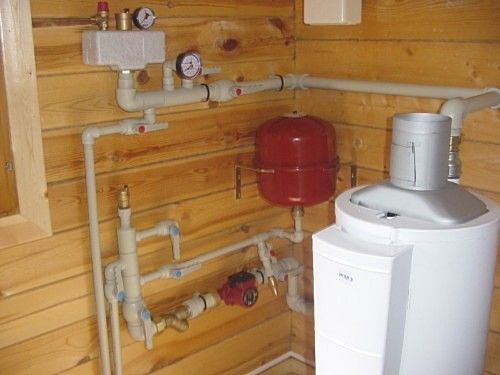
forced circulation
The difference of this system is that the intensity of the movement of the coolant is provided by the operation of the pump, which in turn entails both advantages and disadvantages. But due to the use of a pump, this principle is more often implemented for a closed circuit.
- Installation is still easy enough to be done by hand. The only difference is the pump insert. The device is connected last and always in the return pipe, as it is designed for a liquid temperature of no more than +60 degrees.
- There is no need to observe the difference in the location of the radiators and the boiler.
- Installation is possible in a private house of any area.
- It is possible to regulate the temperature.
The organization of heating according to the principle of forced circulation has its drawbacks.
- Higher heating cost.
- Dependence on the supply of current - the pump is connected to the mains, and in the absence of current, the house will not be heated. The video shows the process of installing the pump.
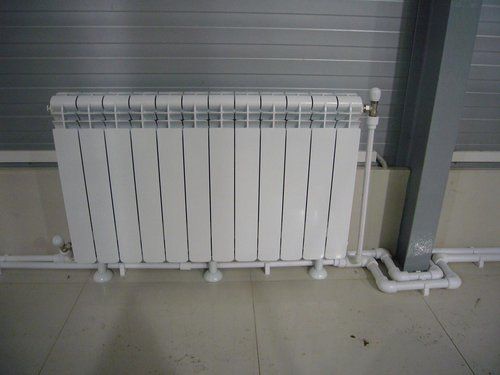
Installation of a closed heating system
Before proceeding with the installation, preliminary calculations should be carried out. They can be made by hand and include a number of options.
- Calculation of power, based on the approximate ratio: 1 sq m of area - 1 kW.
- Calculation of the power of radiators - for this you need to use the passport of the device.
- The choice of pipes, and the assessment of resistance by the size of the pipe section.
- Selection of a boiler of the appropriate capacity and an expansion membrane tank.
When installing heating in a closed circuit, the recommendations should be carefully followed. The video shows the installation of a variant with one pipe and a circulation pump.

